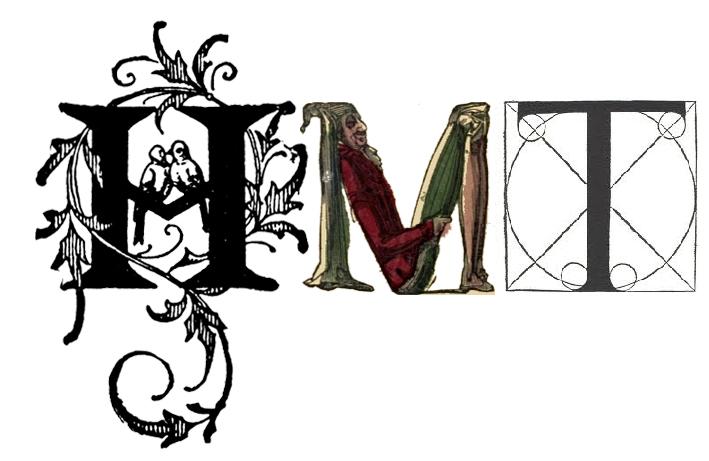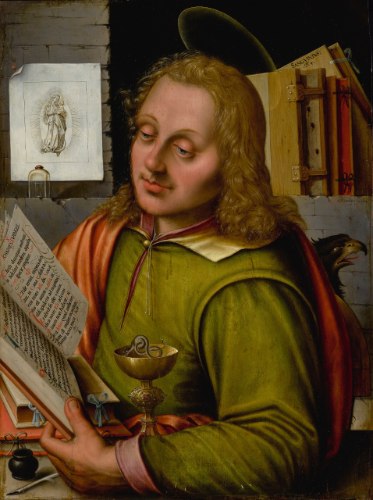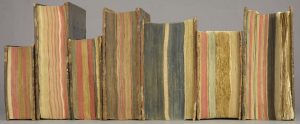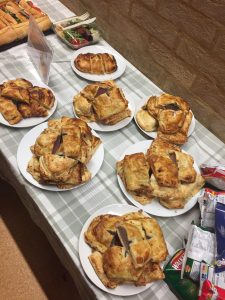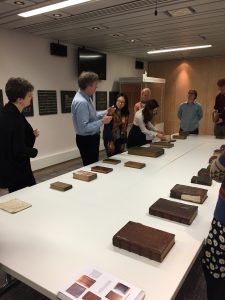UCLA, October 5th-6th 2018
Organizers:
Sean Gurd, Professor of Classics, University of Missouri
Francesca Martelli, Assistant Professor of Classics, UCLA
DEADLINE FOR ABSTRACTS: January 15, 2018
Distributed authorship is a familiar concept in many fields of cultural production. Long associated with pre-modern cultures, it still serves as a mainstay for the study of Classical antiquity, which takes ‘Homer’ as its foundational point of orientation, and which, like many other disciplines in the humanities, has extended its insights into the open-endedness of oral and performance traditions into its study of textual dynamics as well. The rise of genetic criticism within textual studies bears witness to this urge to fray perceptions of the hermetic closure of the written, and to expose the multiple strands of collaboration and revision that a text may contain. And the increasingly widespread use of the multitext in literary editions of authors from Homer to Joyce offers a material manifestation of this impulse to display the multiple different levels and modes of distribution at work in the authorial process. In many areas of the humanities that rely on traditional textual media, then, the distributed author is alive and well, and remains a current object of study.
In recent years, however, the dynamic possibilities of distributed authorship have accelerated most rapidly in media associated with the virtual domain, where modes of communication have rendered artistic creation increasingly collaborative, multi-local and open-ended. These developments have prompted important questions on the part of scholars who study these new media about the ontological status of the artistic, musical and literary objects that such modes of distribution (re)create. In musicology, for example, musical modes such as jazz improvisation and digital experimentation are shown to exploit the complex relay of creativity within and between the ever-expanding networks of artists and audiences involved in their production and reception, and construct themselves in ways that invite others to continue the process of their ongoing distribution. The impact of such artistic developments on the identity of ‘the author’ may be measured by developments in copyright law, such as the emergence of the Creative Commons, an organization that enables artists and authors to waive copyright restrictions on co-creators in order to facilitate their collaborative participation. And this mode of distribution has in turn prompted important questions about the orientation of knowledge and power in the collectives and publics that it creates.
This conference seeks to deepen and expand the theorising of authorial distribution in the virtual domain, and to explore the insights that its operations in this sphere might lend into the mechanisms of authorial distribution at work in older (and, indeed, ancient) media. To this end, it will bring together scholars working in the fields of communication and information technology with scholars working across the humanities, in order to explore what kind of dialogue we might generate on the question of distributed authorship across these disciplinary (and other) divisions. Ultimately, our aim is to develop and refine a set of conceptual tools that will bring distributed authorship into a wider remit of familiarity; and to explore whether these tools are, in fact, unique to the new media that have inspired their most recent discursive formulation, or whether they have a range of application that extends beyond the virtual domain.
We invite contributions from those who are engaged directly with the processes and media that are pushing and complicating ideas of distributed authorship in the world today, and also from those who are actively drawing on insights derived from these contemporary developments in their interpretation of the textual and artistic processes of the past, on the following topics (among others):
- The distinctive features of the new artistic genres and objects generated by modes of authorial distribution, from musical mashups to literary centones.
- The impact that authorial distribution has on the temporality of its objects, as the multiple agents that form part of the distribution of those objects spread the processes of their decomposition/re-composition over time.
- The re-orienting of power relations that arises from the distribution of authorship among networks of senders and receivers, as also from the collapsing of ‘sender’ and ‘receiver’ functions into one another.
- The modes of ‘self’-regulation that authorial collectives develop in order to sustain their identity.
- Fandom and participatory culture, in both virtual and traditional textual media.
- The operational dynamics of ‘multitexts’ and ‘text networks’, and their influence by and on virtual networks.
Paper proposals will be selected for their potential to open up questions that transcend the idiom of any single medium and/or discipline. Please send a proposal of approximately 500 words to gurds@missouri.edu by January 15, 2018.
Confirmed participants include:
Mario Biagioli, Distinguished Professor of Law and Science and Technology Studies, and director of the Centre for Science and Innovation Studies, UC Davis (author of Galileo Courtier, Chicago 1993; and editor, with Peter Galison, of Scientific Authorship, Routledge 2003).
Georgina Born, Professor of Music and Anthropology, Oxford University (director of Music, Digitisation, Mediation: Towards Interdisciplinary Music Studies, or MusDig: http://musdig.music.ox.ac.uk).
Christopher Kelty, Professor of Anthropology, Information Studies, and at the Institute for Society and Genetics, UCLA (author of Two Bits: the Cultural Significance of Free Software, Duke 2008).
Scott McGill, Professor of Classics, Rice University (author of Virgil Recomposed: the Mythological and Secular Centos in Antiquity, Oxford 2005; and Plagiarism in Latin Literature, Cambridge 2012)
Daniel Selden, Professor of Literature, UC Santa Cruz (author of numerous articles, and a forthcoming book, on the phenomenon of ‘text networks’ in the long Hellenistic period)
